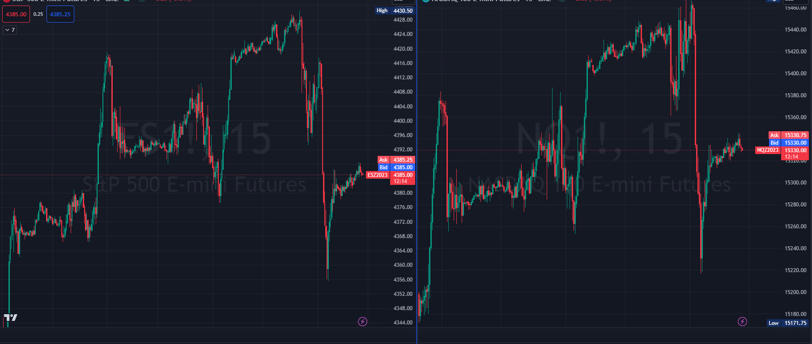Market Review 12th October 2023
Simplify the craziness
DAILY REVIEW
N
3 min read
Inflation in the United States remained elevated in September, surprising both consumers and economists. The Consumer Price Index (CPI) for the 12 months ending in September rose by 3.7%, a figure slightly above the anticipated 3.6% increase. Monthly price growth also exceeded expectations, registering at 0.4%. While these headline figures reflect continued inflationary pressures, a closer examination of the data reveals some promising trends and areas of improvement that may alleviate concerns for American households and the Federal Reserve.
Food Prices Slow Down
A noteworthy development is the slowdown in food price inflation. Food prices, which have been a significant contributor to inflationary pressures, are now at their lowest rate since March 2021, aligning with the overall inflation rate of 3.7%. This marks the first time since early 2022 that food prices have not outpaced overall inflation. Grocery price increases are even lower, at 2.4% annually. This slowdown in food price inflation is a welcome sign for consumers, as it eases the strain on their budgets.
Core CPI Cools
Another encouraging trend is the cooling of the core Consumer Price Index, which excludes food and gas prices. For the sixth consecutive month, core CPI experienced a decline, registering an annual increase of 4.1% with a monthly gain of 0.3%. This represents the lowest annual growth rate for core CPI in two years. The consistent cooling of core inflation aligns with the Federal Reserve's objectives and their ongoing efforts to combat rising inflation through rate hikes.
Lingering Rent Pressures
A significant factor contributing to inflationary pressures is the shelter index, which encompasses rental leases and the implicit rental value of owner-occupied properties. This index accounted for 70% of the monthly core increase and more than half of the overall monthly increase. Economists anticipate that shelter costs, as measured by the CPI, should eventually start to decrease. Real-time market data indicates flat market rents across the country since the end of the previous year, a sign that shelter costs may soon slow their rise. Removing shelter costs from the equation, core CPI rose just 0.1% for the month and is up 2% year-over-year, marking the lowest annual increase since March 2021.
The Federal Reserve's Perspective
The Federal Reserve has been actively working to combat inflation through a campaign of rate hikes since March 2022. While inflation remains above their 2% target, they are encouraged by the direction in which certain inflation indicators are moving. It's essential for the Fed to witness at least six months of lower inflation before declaring victory. However, the consequences of higher borrowing costs are starting to impact households, particularly those with credit card debt or subprime car loans. Businesses with high levels of debt in variable-rate bonds are also feeling the pressure. If rates continue to rise, as signaled by the Fed, this could lead to a decline in consumer and business spending and hiring in the coming months.
External Factors Influencing Inflation
Several external factors are adding headwinds to the inflation situation. A cooling labor market, the resumption of student loan payments, and slowing wage growth are contributing to the slowdown in economic activity and potential disinflation. As the labor market softens, and economic activity moderates, the disinflation trend is expected to continue into 2024.
Concluding Thoughts
While the current inflationary pressures may seem concerning for many Americans, there is hope on the horizon. Key indicators are moving in the right direction, especially in terms of food and core CPI inflation. The Federal Reserve's actions and the resumption of student loan payments will help mitigate the inflation situation. However, it is essential to keep an eye on how external factors, such as labor market conditions and economic activity, evolve. While some bumps may occur on the path to lower inflation, experts anticipate a return to the Federal Reserve's target and more comfortable inflation levels within a year. The recent bond yield movements and stock market reactions emphasize the importance of monitoring inflation closely, as it continues to shape the economic landscape.


